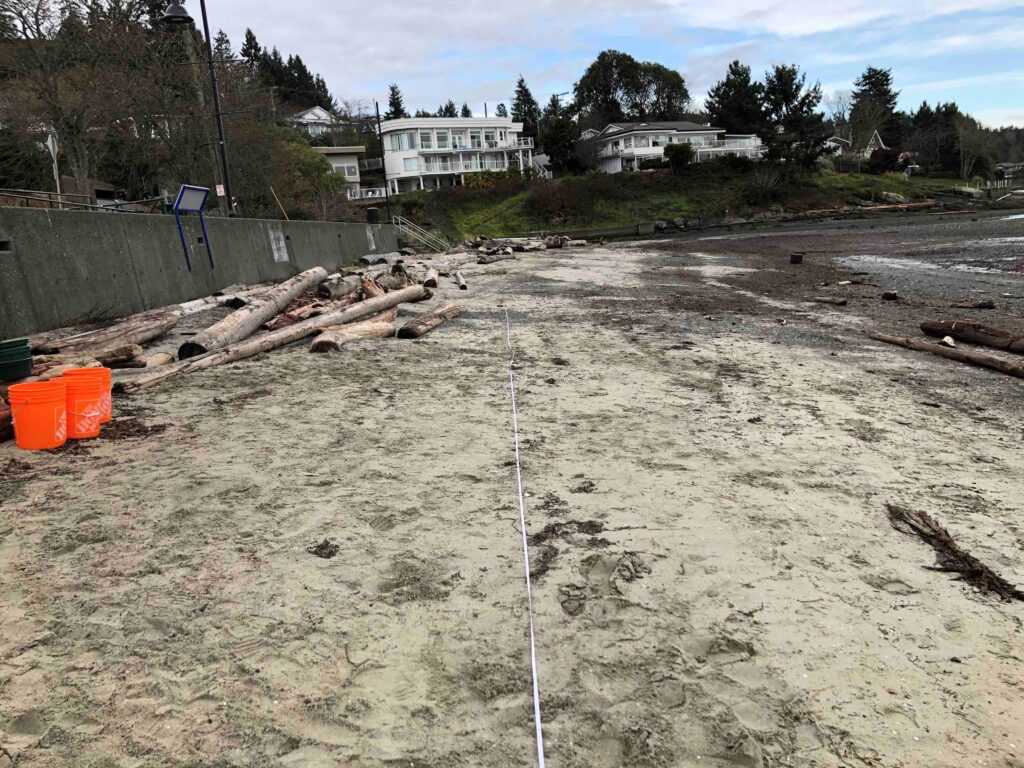The critical need for a coastal marine strategy in B.C.
B.C. has more than 25 thousand kilometers of iconic coastline, from sandy shores and rainforests to dramatic cliffs and deep fjords. This landscape contains similarly diverse habitats—estuaries, mudflats, seagrass meadows, sand or gravel beaches and rocky tidal zones—which enable B.C.’s coastal waters to support a wide variety of sea life and marine vegetation.
However, this coastal region is experiencing negative impacts from climate change—storm surges, sea-level rise and increasing temperatures, including the 2021 heat dome that “cooked” an estimated 1 billion sea creatures—which have been made worse by coastal development.
Sea-level rise, for instance, is pushing intertidal and subtidal habitats like salt marshes and sea grass beds inland. Or rather, they would be moving inland except for human-made shoreline modifications known as hard armouring—seawalls, rocky “riprap,” bulkhead retaining walls and other structures purpose-built to reduce flooding and erosion—which prevent this habitat migration and cause a “coastal squeeze,” leading to habitat fragmentation and loss. This, in turn, can result in species loss, and the release of stored carbon.
The need to safeguard these natural ecosystems in a comprehensive way cannot be overstated.

What is the current state of coastal protection in B.C.?
Currently, B.C. is one of the few coastal jurisdictions in North America that does not have a coastal marine strategy or law, instead relying on a combination of regulations administered by various governments and ministries. With shoreline development largely left to the discretion of municipalities, these different zoning bylaws, development permit areas and official community plans have resulted in inconsistent protections.
But this past December, the B.C. government published an intentions paper outlining a commitment to co-developing the province’s first coastal marine strategy with Coastal First Nations within the newly developed Ministry of Waters, Land and Resources. The vision and policy concepts that are under consideration have been outlined in an intentions paper.
Here is where you come in
In just 15 minutes, you can add your input on this important topic and have a direct role in the consideration process for a provincial coastal marine strategy. The linked public engagement platform includes a questionnaire, which gives you the chance to voice your recommendations and share your support for the development of this strategy. Be sure to add your input by April 14, 2023!
Unsure about what to say? Check out our stance below.
About the vision statement: While it captures the importance of stewardship, it would benefit from including preservation and protection as well as a specific aim to restore or regenerate degraded coastal ecosystems. This would deliver a much stronger alignment between the vision statement and the strategy’s proposed outcomes and policy intentions.
About the outcomes: We feel strongly about the current order to the six outcomes as they are laid out in the intentions paper:
- A Healthy and Productive coast
- Resilience to Climate Change
- Trusting, Respectful Relationships
- Holistic Learning and Knowledge Sharing
- Community Well-Being
- A Sustainable, Thriving Ocean Economy
However, these outcomes require clear, time-bound objectives and commitments with associated measurable actions in order to meet the identified objectives.
Why we need legislation: A legislative tool is required to provide accountability, leadership, integrity, stewardship, and transparency necessary for good governance of the coastal marine environment and to enable the province to achieve the multiple policy intentions under consideration for the strategy.
Specifically, co-developing this provincial legislation with Coastal First Nations would provide a necessary legal tool and mechanism for the local and Indigenous planners to better protect coastal habitat from shoreline modifications while upholding First Nations rights as the original stewards of the lands and water.
The first step in improving coastal community well-being and building a more sustainable marine economy is to enable provincial action to co-develop a coastal zone legislation. This will set the foundation to achieve:
- Better protection and restoration of costal habitats including blue carbon sinks like eelgrass meadows and salt marshes
- Better implementation and use of nature-based solutions, like restoring and expanding salt marshes for wave energy absorption and coastal protection to reduce the threat of coastal squeeze.
- Stewardship of the coastal zone to respect and uphold First Nations as the original steward of the land and water
Thank you for joining us in this effort by answering the government survey and making your voice heard on this urgent issue. Together, we can help to establish a coast-wide standard that will deliver community well-being, a sustainable, thriving ocean economy and healthy coastal habitats for current and future generations.

